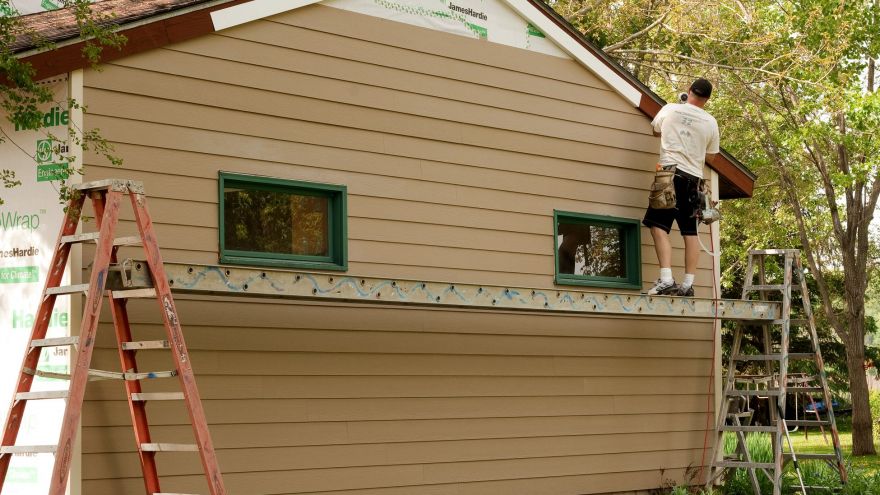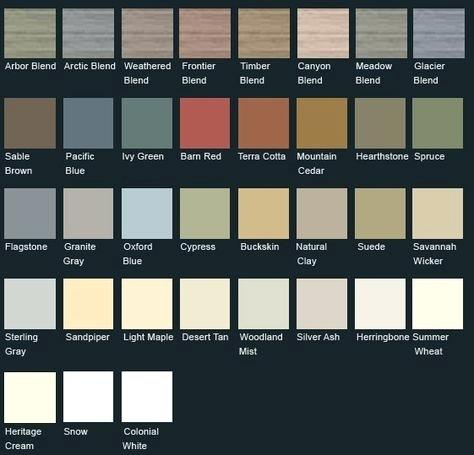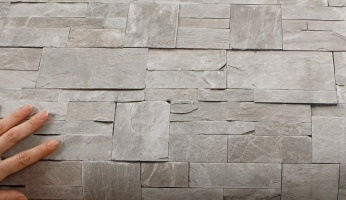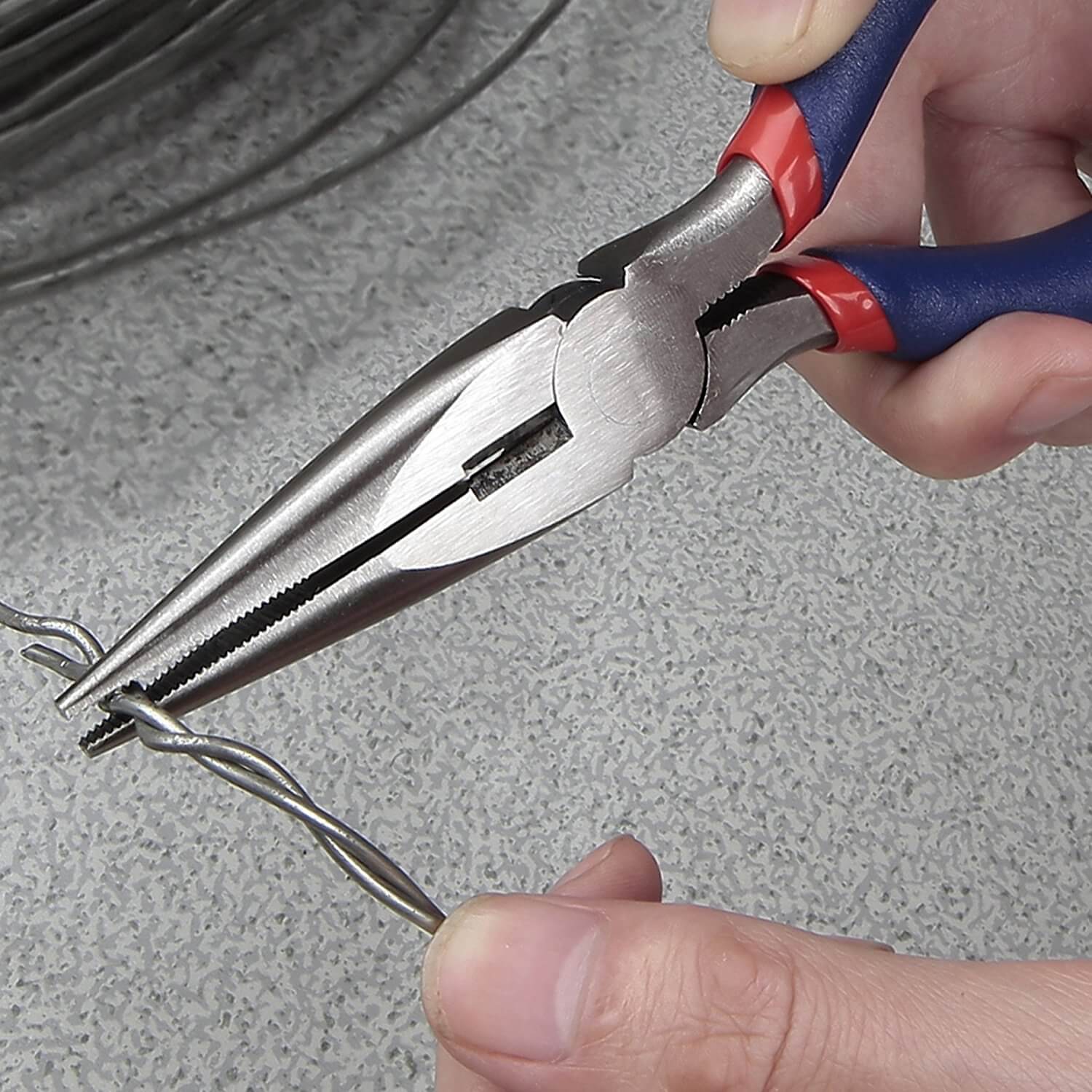- No Obligations
- Stop Paying Too Much For Your Contractor
- No Spam Calling
- Screened & ID Checked Contractors only!
Painting Vinyl Siding: How to Choose the Right Color and Tips to Do It Like a Pro
0
 Painting Vinyl Siding: How to Choose the Right Color and Tips to Do It Like a Pro
earlyexperts.net
Painting Vinyl Siding: How to Choose the Right Color and Tips to Do It Like a Pro
earlyexperts.net
When you made the decision to resurface your house with vinyl siding, you probably thought you were making a permanent choice. It was a bit of a tough pill to swallow at first that whichever color you chose would be there forever. Ultimately, though, you were okay with it because vinyl siding also meant you would never have to patch or paint EVER again.
After a few years, however, you began to notice the siding on one side of the house, the house that tends to spend more summer days in the sun, started to take on a slightly different hue than the rest of the house.
But, they said forever, you might have thought to yourself, realizing that the crisp color on your always brand-new looking siding had begun to fade.
Fortunately for you, while the vinyl siding can be eternal in its durability, you do not have to live with a perpetually fading color for too long.
Contrary to popular belief, you CAN paint vinyl siding, and it’s definitely less work than the annual painting task of your cedar shake days. Still, there are some rules to follow and limitations to paints designed specifically for this purpose. Find everything you will need to beat the sun at its own game and preserve the color of your siding below.
Picking Your Paint: Some Not So Small Considerations
Siding is designed with a specific amount of heat absorption in mind. The color of siding plays a big role in this. Darker colors absorb more heat and lighter colors tend to breathe better in the hot sun. It is why wearing a black t-shirt to do yard work in August is a bad idea.
To account for heat, sidings dipped in darker hues are made to withstand more sun. That said, if your vinyl is originally a light color, and you decide to use your fading siding as an opportunity to go with a new look, you should NOT choose a darker color. Your light-colored siding is not built to retain the levels of heat that a darker shade will attract.

Vinyl Siding Paint Colors
What’s the worst that can happen? At the end of the day, vinyl is a nice, technical word used to describe a type of plastic. Have you ever left Tupperware in the microwave for too long? That’s the worst that can happen. The increased temperature of your originally white or yellow siding can literally melt. It may not end up a puddle at the base of the foundation, but it will likely buckle and warp, which is arguably a worse look.
Choosing Color
With regards to vinyl paint color, it is important to note that most paint manufacturers have a vinyl specific line on the market. The mainstream vinyl paints come in select “vinyl safe” colors or colors whose properties will keep the siding’s thermostat at a safe temperature.
Account for Thermal Expansion
Yes, thermal does refer to heat, but this is a separate issue entirely that has more to do with how vinyl siding behaves that makes it so durable. You may notice seams where two pieces of vinyl siding meet and overlap. This is so each piece of siding can slide back and forth a fraction of an inch or so. Ostensibly, one piece is just a hair bigger or smaller than the one with which it is joined. Siding is designed this way as an adaptation of its own expansion and contraction respective to different climates.
In hot weather, the siding will expand and those seams will tighten. The opposite happens in cold weather as the material contracts.
In order to accommodate the movement of the siding, you need to be sure whatever paint you choose contains acrylic and urethane resins. Paint mixes containing these ingredients will coat the surface more completely upon the initial coat, but more importantly, they give the paint some flexibility so there is no flaking or chipping when the weather and the temperature begin to change.

This brings up another consideration. If you paint your siding in the summer months when it is hotter outside, you will be painting an expanded surface. Thus, as the temperature cools, some missed spots may be revealed that were hidden when you first painted. This is a problem easily solved by a few autumn touch-ups.
Preparing the Surface
As with any paint project, you will need to do some prep work. The most important step is a good, thorough cleaning of the siding. For the vinyl siding paint to work its magic completely, it needs a canvas free of mold, mildew, and any debris.
Straight water will not cut it. Try a bleach and water mix. Let it soak in and run down the side of the house. As the solution begins to run, you should be able to see it cutting through the grime. Use a soft bristle brush to spread the mix across the area of the siding and work out all pesky build up, then rinse.
Sans Primer
Up to this point, these steps seem eerily similar to a regular wood-sided house painting project. The major difference, and where you will save the most time and energy, is in the priming (or lack thereof) and the number of coats.
You will only need to use a primer if the color of your siding has faded completely. Otherwise, the base that is there should be sufficient. Paint your first coat and let it dry almost completely before applying a second. This second coat should be your last. Before you evaluate whether or not another is needed, allow twenty-four hours for drying and curing to begin.

Conclusion
You may have thought your vinyl siding would forever save your from exterior paint projects, but there are some things for which even vinyl cannot withstand. While less so, the hue of your siding is still susceptible to the effects of heat and the sun. This is especially the case for sides of the house that are exposed for the majority of the day.
The good news is that after that initial complete painting, you will likely only have to apply touch-ups to those specific spots going forward. When you do, though, be sure to account for the nature of the material and properties of the paint you choose. Doing so will reaffirm the low upkeep you signed up for when you decided on vinyl siding, and it will keep yours looking crisp for years to come.











